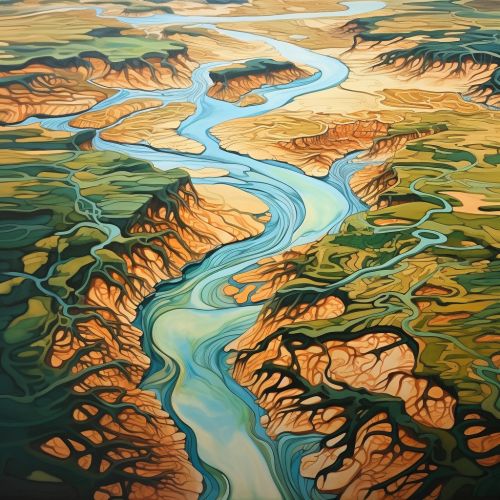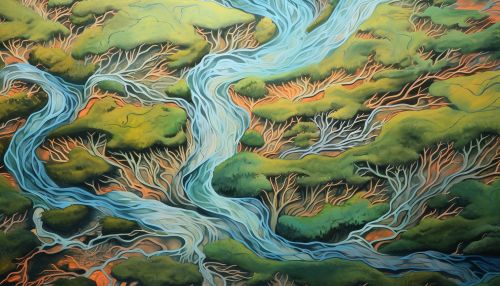The Dynamics of River Systems and Fluvial Landforms
Introduction
River systems and fluvial landforms play a significant role in shaping the Earth's surface. They are dynamic systems that continually interact with the surrounding environment, resulting in a variety of landforms and ecosystems. This article will delve into the intricacies of these systems, exploring their formation, characteristics, and the processes that drive their evolution.


Formation of River Systems
River systems are formed through a process known as drainage. This process begins when precipitation falls on the land surface and begins to flow downhill due to gravity. The water collects in small channels, which merge to form larger channels, eventually forming a network of interconnected streams and rivers. This network, known as a drainage system, is the fundamental structure of a river system.
Components of River Systems
River systems are composed of several key components, each playing a unique role in the system's function and dynamics. These components include the river channel, floodplain, and the river's watershed or catchment area.
River Channel
The river channel is the physical path that a river follows. It is shaped by the river's flow and the materials it transports, a process known as fluvial geomorphology. The channel's shape and size can vary greatly, depending on factors such as the volume of water it carries, the slope of the land, and the type of sediment it transports.
Floodplain
The floodplain is the flat area adjacent to the river channel that is periodically inundated by floodwaters. Floodplains are formed by the deposition of sediment during floods, a process known as alluviation. They play a crucial role in the river system by providing a space for excess water to spread out and slow down, reducing the risk of flooding downstream.
Watershed or Catchment Area
The watershed, or catchment area, is the land area from which a river system collects its water. It is defined by the topography of the land, with high points forming the boundaries that separate one watershed from another. The size and shape of a watershed can greatly influence the volume and timing of water flow in the river system.
Fluvial Processes
Fluvial processes are the physical actions that shape the river system and its landforms. These processes include erosion, transportation, and deposition.
Erosion
Erosion is the process by which water and wind remove soil, rock, or dissolved material from one location on the Earth's surface and transport it to another. In river systems, erosion occurs primarily in the upper course of the river, where the water's energy is highest. This process is responsible for the formation of features such as river valleys and gorges.
Transportation
Transportation is the movement of sediment and other materials by the river's flow. The river's energy is used to carry these materials downstream, where they can be deposited in new locations. The type and size of the material transported can vary greatly, from fine particles of silt and clay to large boulders.
Deposition
Deposition is the process by which the river drops the sediment it has been carrying. This occurs when the river's energy decreases, often in the lower course of the river or when the river enters a larger body of water. Deposition is responsible for the formation of features such as floodplains, deltas, and alluvial fans.
Fluvial Landforms
Fluvial landforms are the physical features created by the actions of rivers and streams. These landforms can be categorized into two main types: erosional landforms and depositional landforms.
Erosional Landforms
Erosional landforms are created by the removal of material from the Earth's surface. In river systems, these include features such as river valleys, canyons, and gorges. These features are typically found in the upper course of the river, where the water's energy is highest.
Depositional Landforms
Depositional landforms are created by the accumulation of sediment and other materials. In river systems, these include features such as floodplains, deltas, and alluvial fans. These features are typically found in the lower course of the river, where the water's energy is lower and deposition is more likely to occur.
Dynamics of River Systems
River systems are dynamic and constantly changing. They respond to changes in climate, land use, and other environmental factors. These changes can result in shifts in the river's course, changes in the size and shape of its channel, and the creation or destruction of fluvial landforms.
